If you had to ask any consultant what their biggest pain point was, many would say it’s finding business.
Just a simple Google search shows hundreds of Quora users stating that finding clients can be pretty challenging, especially in very competitive markets.
So, if you find yourself in the same boat and need more qualified leads, this article will share some of the best-kept secrets that lead generation experts use to help their clients land new customers.
(If you would like a more tailored approach to lead generation for your consulting business, SalesBread offers a free 15-minute strategy session. Hop on a call today, and let’s help you land those deals.)
Proven lead generation techniques for consulting firms
1. Thoughtful LinkedIn Outreach
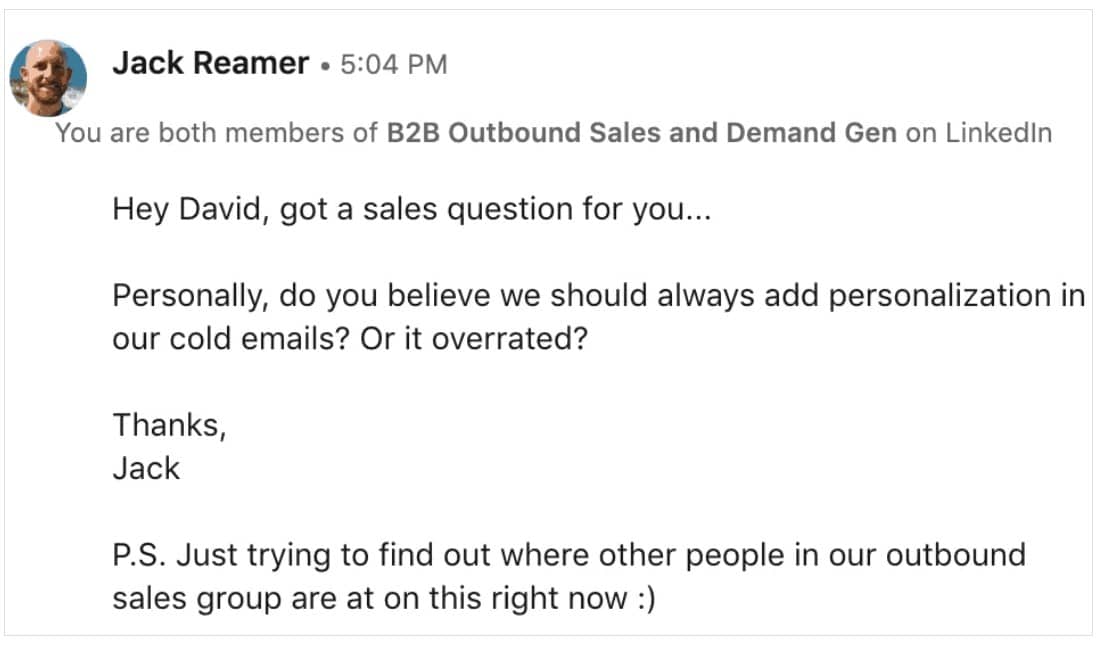
LinkedIn is a gold mine for finding prospects, but you have to do it the right way.
This means no spammy copy-paste outreach templates and broad prospect lists, where you blast a message to thousands of people.
At SalesBread, we focus on quality over quantity.
So, if you would like to try LinkedIn for finding potential clients, we suggest using the following approach.
Build a super refined list of your ideal clients
You need to be obsessive when it comes to list-building.
Why?
Because if your list is too broad you run the risk of reaching out to the wrong people. This just means that you’re wasting time and money.
When it comes to understanding your ideal target audience you want to look at data from your current or past buyers.
We suggest looking at WHO has purchased your service within the past 6 months and then asking yourself, “What do all these buyers have in common?”
For example:
- Are they located in a similar area? Florida? South Africa? Europe?
- What industry are your buyers in? Social media marketing? Saas? Health and wellness?
- How big are the companies using your services? More than 10 employees or less?
- Have they recently received a round of funding?
- Have they recently suffered a PR disaster?
- Do they all use a particular type of software?
- If they seem to have a marketing budget, what are they spending it on?
- Who are the decision-makers? The CEO? Head of marketing?
Looking for similar patterns among your current buyers will make it easier to build look-alike lists of prospects.
You can also use tools like:
These tools can help you use various search filters to build your prospecting lists. For example, if you look at the filters below, you can get very granular on what you are looking for.
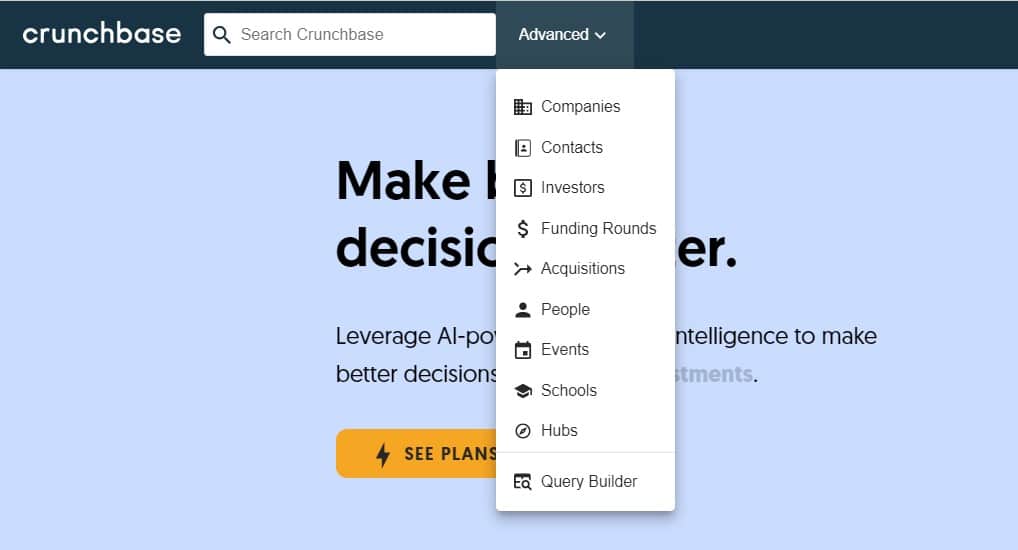
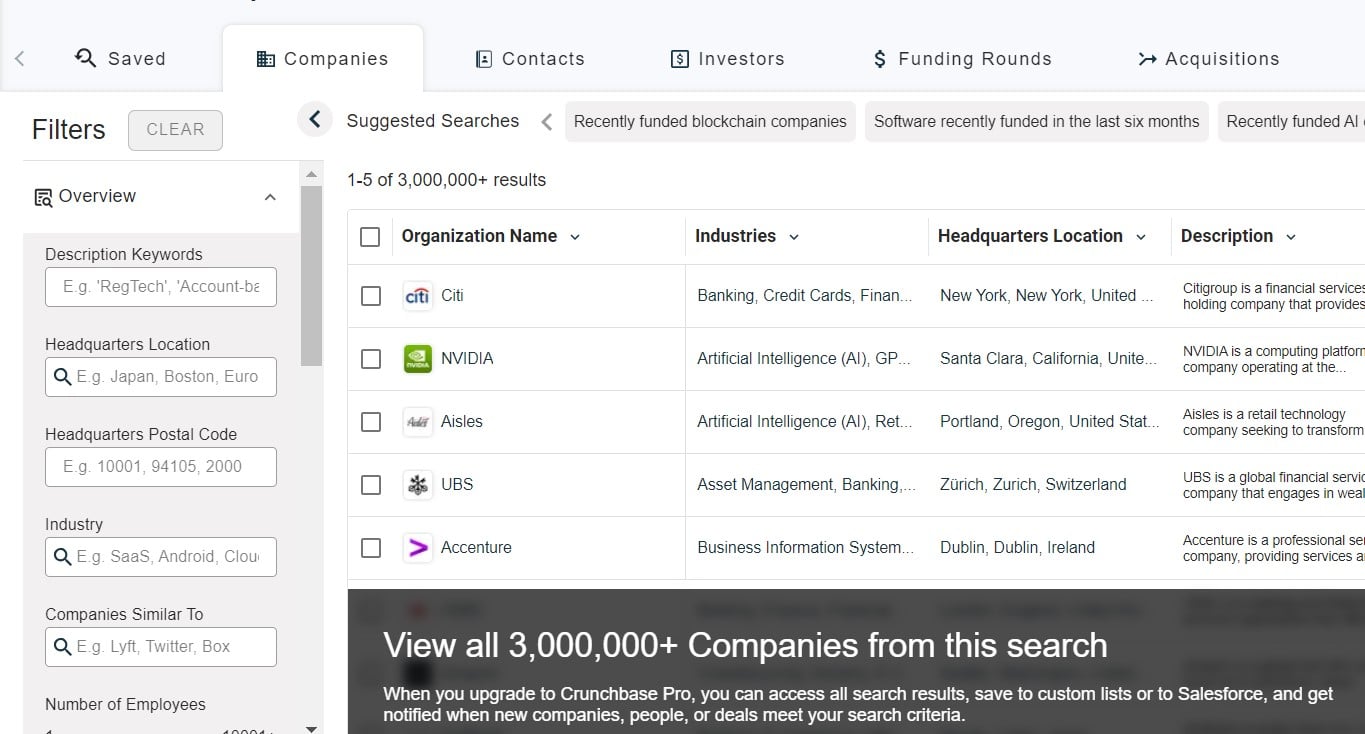
In fact, at Salesbread we use over 34 different filters to build these ultra-refined prospect lists.
You need to obsess about list building if you want LinkedIn outreach to work. If your list is too broad, the chances of prospects declining your offer will be higher.
When a list is ultra-refined, you stand the chance of selling your services to companies that actually need what you have to offer. This means less time wasted and greater conversions.
Plug your list into LinkedIn Sales Navigator
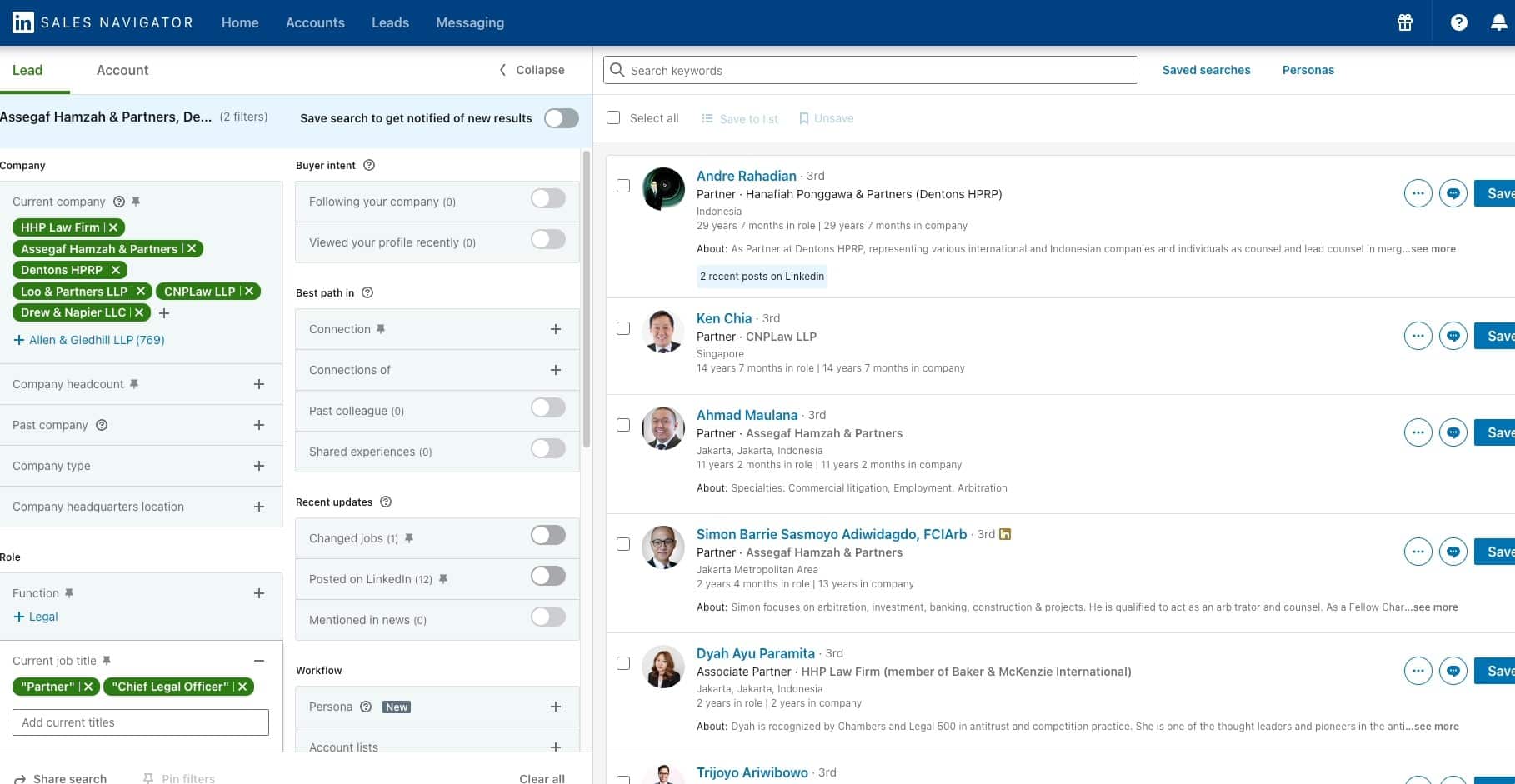
You now need to take your list of accounts and plug it into LinkedIn Sales Navigator. Then you have to find the right people to reach out to at these companies.
So, if you noticed that the main decision-makers were the CEOs of these companies, you could then reach out to the CEOs.
Just a caveat here: LinkedIn Sales Navigator can be inaccurate, so it’s important to double-check the data to ensure you’re reaching out to the right people.
The video below explains this…
Research each prospect and write a personalized message

Have a look at your prospects’ LinkedIn profiles. Is there something specific you can mention about them in your messages?
For example, were they recently interviewed on a podcast? You could mention that in your connection request message.
Here’s an example:
“Michaela, loved your interview with Jack Reamer. Especially your insights on {{xyz}}. Would love to connect with you and learn more about what you do. For context, I do {{pain point you solve}}, would love to see if there’s any way we can support each other.”
When you use a personalized approach, prospects will be more willing to engage with you. Remember, talk about the prospect 90% of the time and only 10% about your service.
Follow up and ask for a booked call
Lastly, follow up with your prospect by adding in more personalization, and see how you can help them solve their pain points with your consulting services. Ask to hop on a quick call.
By using a clear CTA, it will help your prospect know exactly what you want from them.
Be sure to give them context for your call.
If they feel tricked into a sales call they won’t be happy.
Here are some ways to ask for a sales call:
- I’d love to share more on why you may need [PRODUCT] and how it can help [BENEFIT]. How’s {{=day}} next week look for a 15-minute call?
- Are you free for a call this Friday to discuss [MAIN BENEFIT]?
- Are you available for a quick call in the next few days to see if [MY PRODUCT] aligns with your goals?
- When are you free to connect this week? You can use this link to book directly on my calendar.
- Can we target {{=bday+2}} afternoon to discuss [BENEFIT/PROBLEM]
Does this approach work?
Yes, it does.
Since 2019, SalesBread clients have averaged a 19.98% reply rate with the exact same approach.
And… 48.14% of those replies were either meeting requests or qualified sales inquiries on their product or service.
So give this strategy a try. If you need any help, hop on a free 15-minute strategy session with us.
2. Publish a book
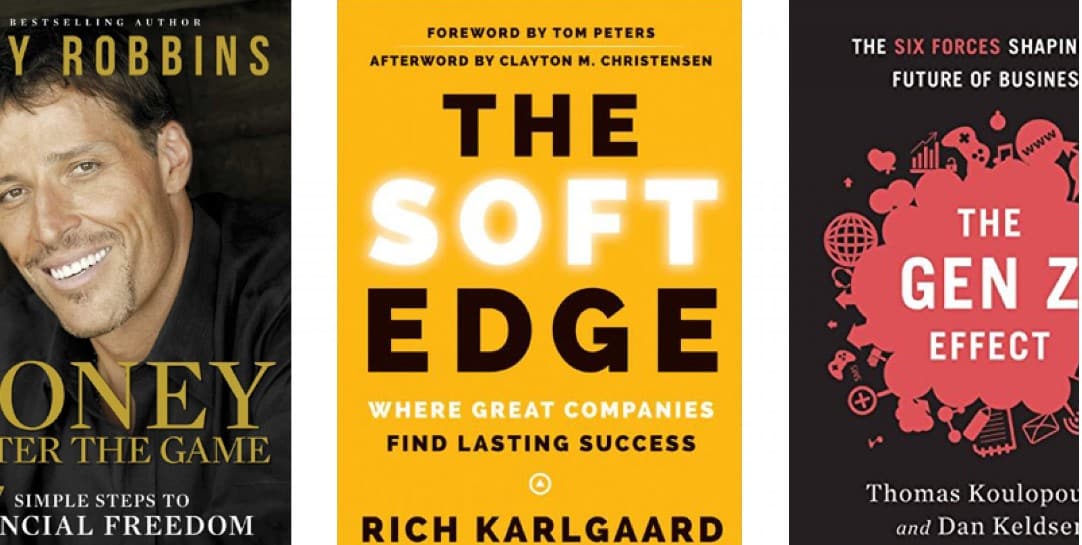
Publishing a book as a thought leader and authority in your field can bring in and close more deals.
Think about it… If you had a choice between hiring a “no name” consultant or a consultant who wrote a book, I’m sure you would hire the latter.
Why?
Because clients want to work with the most qualified and credible individuals; and by publishing a book, you can create this edge.
You can market your book on social media platforms as well. This is a pretty effective lead-generation method and it’s not as hard to execute as some may think.
Thanks to new self-publishing methods, such as Amazon, and companies who can help you write and publish, writing a book with your expert ideas is easier than ever to execute.
We actually worked with a client, the CEO of Million Dollar Author, and this is exactly what they do for business people alike. They will help you write and publish your book within 90 days.
This is a great way to get more brand exposure and set yourself up as an industry expert.
3. Develop a Strong Personal Brand for your business
Establishing an Online Presence
Have you ever been on Facebook or Instagram and kept getting exposed to ads from one particular company?
I know that friends in South Africa kept getting bombarded by ads from Temu.
Every time they opened a social media page, Temu would be all over their feed.
The same thing happened with a new start-up trying to sell natural skin care products.
With the latter, they weren’t only sharing ads, but case studies, videos, before and after photos… The list goes on.
Just because this company kept on showing up, and had great reviews, we decided to actually try out their natural skincare range.

The company created an impactful tagline, which was: Clean Beauty Starts Here.
The company prides itself on clean, organic, cruelty-free products that are safe for the earth and your skin.
Their personal brand stood out from many others because of how their marketing team set them apart from every other skincare company out there.
If you could do the same as a consulting business, you stand the chance of developing a strong brand presence.
Think about what sets your company apart from every other consulting firm out there in your industry. In advertising, think of a strong, and maybe even emotive, tagline that makes an impact.
Below are some examples of famous slogans that some consulting companies have used:

When it comes to creating a strong online presence, make use of:
-
Paid ads
-
Customer testimonials and videos
-
Share case studies
-
You could even make tutorial videos showcasing your expertise
4. Use Social Media lead generation strategies
Building a Strong LinkedIn Profile
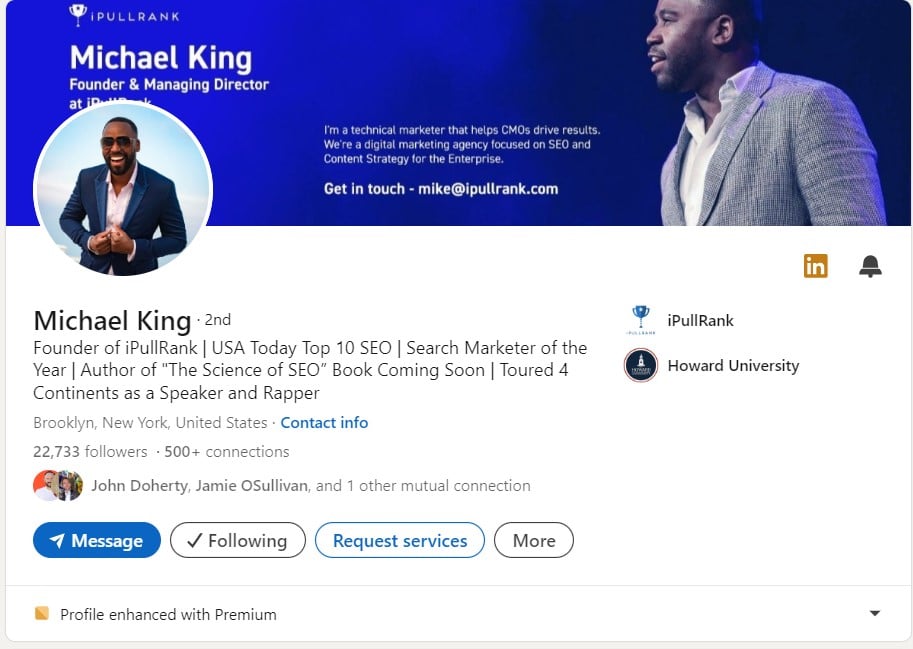
Remember, your LinkedIn profile can be used as a sales page. It doesn’t have to be a page that reads as a resume.
This is especially true if you would like to use LinkedIn to reach out to potential customers.
Your LinkedIn profile is a person’s first impression of who you are and of your company.
So, make it as professional as possible.
You could even use your About section to share how you solve the pain points of your customers.
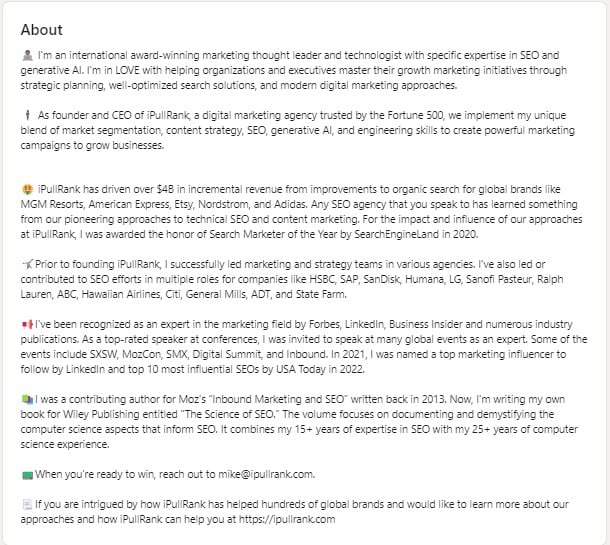
Ensure that your profile photo is professional, and make use of the LinkedIn banner at the top of your page.
A really important aspect of utilizing LinkedIn is sharing valuable content with your audience; By doing this, you will set yourself up as an industry leader.
Here are some ideas:
-
Share stats or observations in your industry
-
You could share links to your blog or podcasts
-
Share success stories of companies that you have helped
-
Share testimonials and client recommendations
-
Comment on other posts with your unique thoughts and insights
Lastly, always make it as easy as possible for your customers to reach out to you. You could have a contact button, or share your email address.
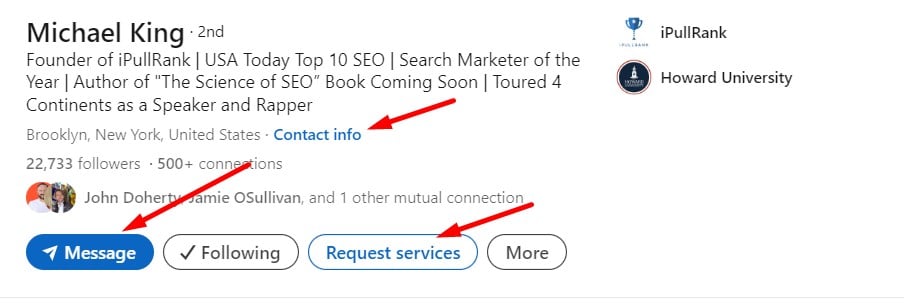
5. Build a profitable LinkedIn network by connecting with your ideal clients
Another important way to generate leads by using LinkedIn is connecting with your ideal customers.
Some people tend to connect with just about anyone in a similar space, but if you can strategically connect with people who could become clients, you’re setting yourself up for a gold mine of leads.
Engaging with Your Audience on Twitter
Look for existing Twitter chats in your industry and hop into the conversations. You can reply to people by using @ with their name in front of it.
After building connections from multiple chats, make sure to follow, like, and retweet their content.
You should also keep engaging with what your connections share to foster relationships that will make you and your brand memorable.
People are more likely to engage with your content if it’s conversational, friendly, interesting, unique, or humorous.
This article: The Complete Guide to Using Twitter to Grow Your Business, goes into more detail.
6. Attend networking events for your consulting business
Consultants can effectively generate leads by attending networking events through a strategic approach that involves preparation, active engagement, and follow-up. You can do this by preparing way in advance.
Before the event
Think of who your ideal clients are for your consulting business, and research any key speakers, or attendees who could be an ideal fit. You could always connect with them via social media before the event.
You will also need to prepare your pitch; Think about any objections that prospects might have and how to handle them.
Another idea is adding prospects to an email list and sharing an email closer to the time of the event. You could even include a lead magnet, like a competition, where prospects could win a free consult worth X amount.
Engagement during the event
You want to engage with prospects by asking them questions and really listening to their pain points. By showing genuine interest, you can win people over and make a lasting impression.
So even if they aren’t ready for your services just yet, they might remember you down the line and reach out to you when the time is right.
Another option is to all participate during the event; you could even find out about what it takes to be a keynote speaker and participate in different discussions.
Post-Event Follow-Up
After the event follow up with the contacts that you made; Reach out to them via email marketing campaigns or personalized LinkedIn outreach.
Keeping track of your interactions is also a good idea because it can help you realize who’s a hot prospect right now, or who might be interested in your services further down the line.
By following these strategies, consultants find valuable lead-generation opportunities at networking events, which in turn can enhance their professional connections and business prospects.
7. Use content marketing strategies for more consulting leads

When people are looking for services, the first thing they do is head to Google.
Even though SEO has become a bit more challenging over the past year, it is still yielding results. You could either hire a content marketing agency to help you out or a freelancer.
If you do decide to use content marketing and SEO in your lead generation strategies, be sure to go after high-intent keywords.
You can use various tools for keyword research, such as:
-
MOZ
-
SE Ranking
-
Google Keyword Planner
These tools can help you find keywords that have a decent amount of traffic but low competition.
Once you find a keyword you would like to go after, you could create an informative blog post and share it across various channels to obtain more website visitors.
Remember to have a clear call to action at the end of your article too; This could include a free consultation or a button to book a sales call.
8. Providing Exceptional Customer Service
Lastly, you should always provide excellent customer service.
If you have happy clients, you could always ask them for referrals, and because they know how professional your services are, they will be more willing to let other companies know about you.
9. Hire business development services
Hiring business development services can boost your lead generation efforts.
Why?
Because these services offer strategic planning and market analysis to identify new opportunities and build relationships with potential clients.
By partnering with experts, your company can implement targeted outreach strategies, such as personalized LinkedIn and email campaigns, to engage with your ideal audience.
SalesBread is an agency where clients know that they can expect 1 lead per day.
Here are some case studies:
Looking to crush your lead generation goals?
Hop on a free 15-minute strategy session with us. We have worked with various consultants in different industries and have helped them find high-quality leads that convert.
Interested in learning more about our strategy? Go here.
